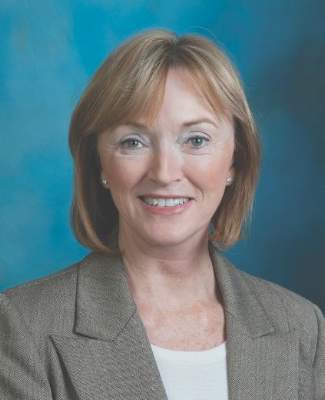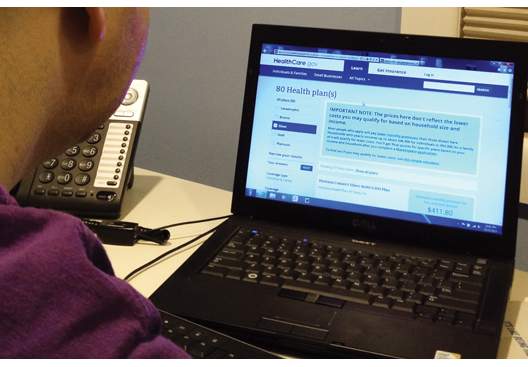User login
UnitedHealthcare requires prior authorization for many hysterectomies
The health insurance giant UnitedHealthcare will soon require physicians to obtain prior authorization for hysterectomies, except vaginal hysterectomies conducted on an outpatient basis.
But the policy, which takes effect April 6, is being criticized by some physicians for interfering with the physician-patient relationship.
In a recent coverage update, UnitedHealthcare cited a committee opinion from the American Congress of Obstetricians and Gynecologists stating that vaginal hysterectomies are the preferred method because of evidence demonstrating that they are associated with better outcomes and fewer complications than are laparoscopic or abdominal hysterectomies.
The coverage policy will affect abdominal, laparoscopic, and laparoscopy-assisted vaginal hysterectomies, as well as vaginal hysterectomies not performed on an outpatient basis.
But ACOG officials themselves questioned the move. In a statement, they acknowledged that vaginal hysterectomy, when possible, produces the best outcomes for patients. “However, many factors are considered when making decisions about the ideal route of hysterectomy for each individual patient,” ACOG wrote. “These decisions are best made between a physician and a patient, not a third party administrative decision-maker.”
Officials at the AAGL, or the American Association of Gynecologic Laparoscopists, said they were still reviewing the change and declined to comment on it.
And physicians in practice are asking whether the decision is wise considering that an increasing number of ob.gyns. are becoming more proficient in performing laparoscopic procedures.
“The number of vaginal hysterectomies that residents do during their training has decreased substantially, whereas the number of laparoscopic cases increased,” Dr. Catherine A. Matthews, division chief of urogynecology and reconstructive pelvic surgery at the University of North Carolina, Chapel Hill, said in an interview. “It is an art that is slowly dying. I think it’s very fair to say more residents are more comfortable with the laparoscopic approach than with the vaginal approach.”
Dr. Isaac Schiff, chief of the department of obstetrics and gynecology at Massachusetts General Hospital in Boston, agreed.
“The problem may be that some doctors may not quite have the skills for vaginal hysterectomy that they have for laparoscopic hysterectomy,” he said in an interview. “They may feel more comfortable doing it laparoscopically than vaginally, and now they are being forced to do it vaginally.”
It is patients’ individual needs that may be getting lost in the debate, though, Dr. Matthews said.
With more surgeons performing laparoscopic procedures, “patients may have been steered [toward] having one mode of hysterectomy over another, based on an individual surgeon’s competence and bias, but it may not actually have been the best thing for any one individual patient,” she said.
The UnitedHealthcare coverage decision may actually promote a procedure that is typically better for patients, Dr. Matthews added, but unless physicians have the necessary training and comfort with it, a shift toward more vaginal hysterectomies won’t necessarily lead to better outcomes.
“If you get a bunch of laparoscopic surgeons trying to do vaginal hysterectomy, the morbidity may well increase, so it may not remain the least morbid intervention,” Dr. Matthews said.
In the future, changes in payment models could also push physicians toward vaginal hysterectomies, Dr. Matthews said. If more insurers adopt systems that offer a single rate of payments for all hysterectomies, regardless of the type of procedure, vaginal hysterectomies could become the preferred method since they are less costly to perform, she said.
The health insurance giant UnitedHealthcare will soon require physicians to obtain prior authorization for hysterectomies, except vaginal hysterectomies conducted on an outpatient basis.
But the policy, which takes effect April 6, is being criticized by some physicians for interfering with the physician-patient relationship.
In a recent coverage update, UnitedHealthcare cited a committee opinion from the American Congress of Obstetricians and Gynecologists stating that vaginal hysterectomies are the preferred method because of evidence demonstrating that they are associated with better outcomes and fewer complications than are laparoscopic or abdominal hysterectomies.
The coverage policy will affect abdominal, laparoscopic, and laparoscopy-assisted vaginal hysterectomies, as well as vaginal hysterectomies not performed on an outpatient basis.
But ACOG officials themselves questioned the move. In a statement, they acknowledged that vaginal hysterectomy, when possible, produces the best outcomes for patients. “However, many factors are considered when making decisions about the ideal route of hysterectomy for each individual patient,” ACOG wrote. “These decisions are best made between a physician and a patient, not a third party administrative decision-maker.”
Officials at the AAGL, or the American Association of Gynecologic Laparoscopists, said they were still reviewing the change and declined to comment on it.
And physicians in practice are asking whether the decision is wise considering that an increasing number of ob.gyns. are becoming more proficient in performing laparoscopic procedures.
“The number of vaginal hysterectomies that residents do during their training has decreased substantially, whereas the number of laparoscopic cases increased,” Dr. Catherine A. Matthews, division chief of urogynecology and reconstructive pelvic surgery at the University of North Carolina, Chapel Hill, said in an interview. “It is an art that is slowly dying. I think it’s very fair to say more residents are more comfortable with the laparoscopic approach than with the vaginal approach.”
Dr. Isaac Schiff, chief of the department of obstetrics and gynecology at Massachusetts General Hospital in Boston, agreed.
“The problem may be that some doctors may not quite have the skills for vaginal hysterectomy that they have for laparoscopic hysterectomy,” he said in an interview. “They may feel more comfortable doing it laparoscopically than vaginally, and now they are being forced to do it vaginally.”
It is patients’ individual needs that may be getting lost in the debate, though, Dr. Matthews said.
With more surgeons performing laparoscopic procedures, “patients may have been steered [toward] having one mode of hysterectomy over another, based on an individual surgeon’s competence and bias, but it may not actually have been the best thing for any one individual patient,” she said.
The UnitedHealthcare coverage decision may actually promote a procedure that is typically better for patients, Dr. Matthews added, but unless physicians have the necessary training and comfort with it, a shift toward more vaginal hysterectomies won’t necessarily lead to better outcomes.
“If you get a bunch of laparoscopic surgeons trying to do vaginal hysterectomy, the morbidity may well increase, so it may not remain the least morbid intervention,” Dr. Matthews said.
In the future, changes in payment models could also push physicians toward vaginal hysterectomies, Dr. Matthews said. If more insurers adopt systems that offer a single rate of payments for all hysterectomies, regardless of the type of procedure, vaginal hysterectomies could become the preferred method since they are less costly to perform, she said.
The health insurance giant UnitedHealthcare will soon require physicians to obtain prior authorization for hysterectomies, except vaginal hysterectomies conducted on an outpatient basis.
But the policy, which takes effect April 6, is being criticized by some physicians for interfering with the physician-patient relationship.
In a recent coverage update, UnitedHealthcare cited a committee opinion from the American Congress of Obstetricians and Gynecologists stating that vaginal hysterectomies are the preferred method because of evidence demonstrating that they are associated with better outcomes and fewer complications than are laparoscopic or abdominal hysterectomies.
The coverage policy will affect abdominal, laparoscopic, and laparoscopy-assisted vaginal hysterectomies, as well as vaginal hysterectomies not performed on an outpatient basis.
But ACOG officials themselves questioned the move. In a statement, they acknowledged that vaginal hysterectomy, when possible, produces the best outcomes for patients. “However, many factors are considered when making decisions about the ideal route of hysterectomy for each individual patient,” ACOG wrote. “These decisions are best made between a physician and a patient, not a third party administrative decision-maker.”
Officials at the AAGL, or the American Association of Gynecologic Laparoscopists, said they were still reviewing the change and declined to comment on it.
And physicians in practice are asking whether the decision is wise considering that an increasing number of ob.gyns. are becoming more proficient in performing laparoscopic procedures.
“The number of vaginal hysterectomies that residents do during their training has decreased substantially, whereas the number of laparoscopic cases increased,” Dr. Catherine A. Matthews, division chief of urogynecology and reconstructive pelvic surgery at the University of North Carolina, Chapel Hill, said in an interview. “It is an art that is slowly dying. I think it’s very fair to say more residents are more comfortable with the laparoscopic approach than with the vaginal approach.”
Dr. Isaac Schiff, chief of the department of obstetrics and gynecology at Massachusetts General Hospital in Boston, agreed.
“The problem may be that some doctors may not quite have the skills for vaginal hysterectomy that they have for laparoscopic hysterectomy,” he said in an interview. “They may feel more comfortable doing it laparoscopically than vaginally, and now they are being forced to do it vaginally.”
It is patients’ individual needs that may be getting lost in the debate, though, Dr. Matthews said.
With more surgeons performing laparoscopic procedures, “patients may have been steered [toward] having one mode of hysterectomy over another, based on an individual surgeon’s competence and bias, but it may not actually have been the best thing for any one individual patient,” she said.
The UnitedHealthcare coverage decision may actually promote a procedure that is typically better for patients, Dr. Matthews added, but unless physicians have the necessary training and comfort with it, a shift toward more vaginal hysterectomies won’t necessarily lead to better outcomes.
“If you get a bunch of laparoscopic surgeons trying to do vaginal hysterectomy, the morbidity may well increase, so it may not remain the least morbid intervention,” Dr. Matthews said.
In the future, changes in payment models could also push physicians toward vaginal hysterectomies, Dr. Matthews said. If more insurers adopt systems that offer a single rate of payments for all hysterectomies, regardless of the type of procedure, vaginal hysterectomies could become the preferred method since they are less costly to perform, she said.
Cancer society critical of new chemo payment bundle
A finalized Medicare payment model for chemotherapy is not much of an improvement from its draft version, according to the American Society of Clinical Oncology.
The Oncology Care Model developed in the Center for Medicare and Medicaid Innovation is designed to be an episode-based, performance-based payment model for chemotherapy that incentivizes high-quality, coordinated care.
Physicians looking to participate in the program need to meet a number of criteria, according to a frequently asked questions document posted to the CMS website. The criteria include attesting to offering patient access 24 hours a day, 7 days a week to an appropriate clinician who has real-time access to the practice’s medical records; use of a certified electronic health record; utilization of data for continuous quality improvement; providing the core function of patient navigation; documenting a care plan that contains the 13 components in the Institute of Medicine Care Management Plan; and treating patients in accordance with nationally recognized clinical guidelines.
Payments will be based on an episode of care that begins either with an initial chemotherapy administration claim or an initial Part D chemotherapy claim and will include all Medicare Part A and B services received during the 6-month episode.
That design, however, comes up short in a number of areas, according to ASCO.
“We are disappointed they have chosen to pursue only one model – and one that continues to rely on a broken fee-for-service system,” ASCO Chief Medical Officer Richard Schilsky said in a statement.
When CMMI proposed the system in August 2014, ASCO was in support of at least testing the model but expressed concern in comments to the agency at that time that there were not other models being tested.
“We strongly urge {CMS] to also test models that include more fundamental reform, away from fee for service, which represents a change many oncology practices believe is vital to sustaining a robust cancer care delivery system,” ACSO said in its comment letter.
Physicians looking to participate in the Oncology Care Model need to submit a letter of intent to participate by April 23. Applications to participate are due June 18.
A finalized Medicare payment model for chemotherapy is not much of an improvement from its draft version, according to the American Society of Clinical Oncology.
The Oncology Care Model developed in the Center for Medicare and Medicaid Innovation is designed to be an episode-based, performance-based payment model for chemotherapy that incentivizes high-quality, coordinated care.
Physicians looking to participate in the program need to meet a number of criteria, according to a frequently asked questions document posted to the CMS website. The criteria include attesting to offering patient access 24 hours a day, 7 days a week to an appropriate clinician who has real-time access to the practice’s medical records; use of a certified electronic health record; utilization of data for continuous quality improvement; providing the core function of patient navigation; documenting a care plan that contains the 13 components in the Institute of Medicine Care Management Plan; and treating patients in accordance with nationally recognized clinical guidelines.
Payments will be based on an episode of care that begins either with an initial chemotherapy administration claim or an initial Part D chemotherapy claim and will include all Medicare Part A and B services received during the 6-month episode.
That design, however, comes up short in a number of areas, according to ASCO.
“We are disappointed they have chosen to pursue only one model – and one that continues to rely on a broken fee-for-service system,” ASCO Chief Medical Officer Richard Schilsky said in a statement.
When CMMI proposed the system in August 2014, ASCO was in support of at least testing the model but expressed concern in comments to the agency at that time that there were not other models being tested.
“We strongly urge {CMS] to also test models that include more fundamental reform, away from fee for service, which represents a change many oncology practices believe is vital to sustaining a robust cancer care delivery system,” ACSO said in its comment letter.
Physicians looking to participate in the Oncology Care Model need to submit a letter of intent to participate by April 23. Applications to participate are due June 18.
A finalized Medicare payment model for chemotherapy is not much of an improvement from its draft version, according to the American Society of Clinical Oncology.
The Oncology Care Model developed in the Center for Medicare and Medicaid Innovation is designed to be an episode-based, performance-based payment model for chemotherapy that incentivizes high-quality, coordinated care.
Physicians looking to participate in the program need to meet a number of criteria, according to a frequently asked questions document posted to the CMS website. The criteria include attesting to offering patient access 24 hours a day, 7 days a week to an appropriate clinician who has real-time access to the practice’s medical records; use of a certified electronic health record; utilization of data for continuous quality improvement; providing the core function of patient navigation; documenting a care plan that contains the 13 components in the Institute of Medicine Care Management Plan; and treating patients in accordance with nationally recognized clinical guidelines.
Payments will be based on an episode of care that begins either with an initial chemotherapy administration claim or an initial Part D chemotherapy claim and will include all Medicare Part A and B services received during the 6-month episode.
That design, however, comes up short in a number of areas, according to ASCO.
“We are disappointed they have chosen to pursue only one model – and one that continues to rely on a broken fee-for-service system,” ASCO Chief Medical Officer Richard Schilsky said in a statement.
When CMMI proposed the system in August 2014, ASCO was in support of at least testing the model but expressed concern in comments to the agency at that time that there were not other models being tested.
“We strongly urge {CMS] to also test models that include more fundamental reform, away from fee for service, which represents a change many oncology practices believe is vital to sustaining a robust cancer care delivery system,” ACSO said in its comment letter.
Physicians looking to participate in the Oncology Care Model need to submit a letter of intent to participate by April 23. Applications to participate are due June 18.
Physician education gaps impact breast density laws
More than 20 states have enacted so-called breast density notification laws, but the impact has varied. And part of the problem, experts say, is that ob.gyns. don’t have enough information to advise patients about their secondary screening options.
“If primary care clinicians can’t answer the patients’ questions adequately, then this law could potentially negatively impact patients,” said Dr. Kathleen Khong, a radiologist at the University of California, Davis, who has been researching the impact of California’s notification law, which went into effect in 2013.
Connecticut became the first state to enact a breast density notification law in 2009, requiring that all patients be given information about their breast density on their mammography report. For women with dense breasts, the law mandated specific language on the report stating that patients “might benefit from supplementary screening tests, which can include a breast ultrasound screening or a breast MRI examination.”
Since then, another 20 states have enacted similar laws. And patient advocates are pushing Congress to set a minimum federal standard for notifying patients about their breast density.
But as more states adopt notification mandates, researchers have found that the implementation is often uneven, in part because ob.gyns. and other women’s health care providers don’t know how to counsel patients about the pros and cons of further imaging.
For instance, in Connecticut, some practices refer 100% of women with dense breasts for whole-breast ultrasound screening, while other practices refer none. And only 45% of Connecticut women who were referred for follow-up ultrasonography activity received it, according to Dr. Priscilla Slanetz, a radiologist at Beth Israel Deaconess Medical Center in Boston, and her colleagues (N. Engl. J. Med. 2015;372:593-5).
Dr. Slanetz and her colleagues were looking at the implementation in Connecticut because their home state of Massachusetts is considering a breast density notification of its own.
“It became very clear to myself and my two colleagues that although we’re very aware of breast density, our primary care providers in particular really have no knowledge about it,” Dr. Slanetz said.
Dr. Sharon Mass, an ob.gyn. in Morristown, N.J., agrees, adding that education is a challenge because of a lack of consistent evidence to help guide physicians as they encounter questions from their patients.
While about half of women have dense breasts, the existing notification laws don’t account for the fact that some women have heterogenously dense breasts, while others have extremely dense breasts, Dr. Mass said.
The need for more education is echoed in a recent study led by Dr. Khong at the University of California, Davis. According to a survey of 77 physicians in the UC Davis Medical Center following the implementation of a notification law in April 2013, roughly half (49%) reported no knowledge of the legislation and 32% noted an increase in patient levels of concern about breast density. About 50% of women receiving mammograms receive the notification about dense breasts, according to the UC Davis researchers.
The survey found that 55% of respondents were “somewhat comfortable” and 12% were “not comfortable” with breast density questions from their patients. Three-quarters of survey respondents said they wanted more education about the breast density law and its implications for primary care.
But even education is going to be a challenge, said Dr. Khong.
“Breast density is a very complicated and controversial topic and there is no straight answer for every patient,” Dr. Khong said, adding that there is no prospective study that spells out what specific type of imaging is appropriate for women with varying degrees of breast density.
“So even if we teach primary care physicians, we can’t give them a black and white answer for every patient,” she said. “It is very difficult. It is very case by case.”
Dr. Mass added that because of the case-by-case nature, the American Congress of Obstetricians and Gynecologists has “actually been opposed to every single one of these initiatives in every state because there is not the support at the grassroots level or the physician level to understand what to do with this information.”
Dr. Khong said that UC Davis is working to address these issues by surveying other academic medical centers and ultimately developing an education plan for primary care physicians, which could range from educational conferences to brochures or PowerPoint sources for self-learning, to a dynamic algorithm that will help guide clinicians to the appropriate kinds of supplemental screening.
The New Jersey section of ACOG has developed a brochure for physicians aimed at helping them address patient concerns around breast density and further screening based on their state’s law. But “on a national level, [clear guidance] does not exist at all and [it] is a huge deficit,” Dr. Mass said.
Dr. Slanetz agreed that screening can be a highly patient-specific decision, and the notification laws create an opportunity for an in-depth discussion.
“This whole movement, I think, is wonderful because it really does open a discussion with our patients about the strength and limitations of these different imaging tools we have,” Dr. Slanetz said. It “opens the door for primary care providers to really individualize how we best screen patients because there are a lot of patients out there, whether or not they have dense breast tissue, that might actually qualify for high-risk screening.”
But Dr. Slanetz cautioned against laws that recommend a specific kind of screening. If the law calls for a specific test and there is no insurance mandate to cover it, “you are going to create potential disparities in access to appropriate care, having women who are of lower socioeconomic status not being able to take advantage of the additional screening,” she said.
More than 20 states have enacted so-called breast density notification laws, but the impact has varied. And part of the problem, experts say, is that ob.gyns. don’t have enough information to advise patients about their secondary screening options.
“If primary care clinicians can’t answer the patients’ questions adequately, then this law could potentially negatively impact patients,” said Dr. Kathleen Khong, a radiologist at the University of California, Davis, who has been researching the impact of California’s notification law, which went into effect in 2013.
Connecticut became the first state to enact a breast density notification law in 2009, requiring that all patients be given information about their breast density on their mammography report. For women with dense breasts, the law mandated specific language on the report stating that patients “might benefit from supplementary screening tests, which can include a breast ultrasound screening or a breast MRI examination.”
Since then, another 20 states have enacted similar laws. And patient advocates are pushing Congress to set a minimum federal standard for notifying patients about their breast density.
But as more states adopt notification mandates, researchers have found that the implementation is often uneven, in part because ob.gyns. and other women’s health care providers don’t know how to counsel patients about the pros and cons of further imaging.
For instance, in Connecticut, some practices refer 100% of women with dense breasts for whole-breast ultrasound screening, while other practices refer none. And only 45% of Connecticut women who were referred for follow-up ultrasonography activity received it, according to Dr. Priscilla Slanetz, a radiologist at Beth Israel Deaconess Medical Center in Boston, and her colleagues (N. Engl. J. Med. 2015;372:593-5).
Dr. Slanetz and her colleagues were looking at the implementation in Connecticut because their home state of Massachusetts is considering a breast density notification of its own.
“It became very clear to myself and my two colleagues that although we’re very aware of breast density, our primary care providers in particular really have no knowledge about it,” Dr. Slanetz said.
Dr. Sharon Mass, an ob.gyn. in Morristown, N.J., agrees, adding that education is a challenge because of a lack of consistent evidence to help guide physicians as they encounter questions from their patients.
While about half of women have dense breasts, the existing notification laws don’t account for the fact that some women have heterogenously dense breasts, while others have extremely dense breasts, Dr. Mass said.
The need for more education is echoed in a recent study led by Dr. Khong at the University of California, Davis. According to a survey of 77 physicians in the UC Davis Medical Center following the implementation of a notification law in April 2013, roughly half (49%) reported no knowledge of the legislation and 32% noted an increase in patient levels of concern about breast density. About 50% of women receiving mammograms receive the notification about dense breasts, according to the UC Davis researchers.
The survey found that 55% of respondents were “somewhat comfortable” and 12% were “not comfortable” with breast density questions from their patients. Three-quarters of survey respondents said they wanted more education about the breast density law and its implications for primary care.
But even education is going to be a challenge, said Dr. Khong.
“Breast density is a very complicated and controversial topic and there is no straight answer for every patient,” Dr. Khong said, adding that there is no prospective study that spells out what specific type of imaging is appropriate for women with varying degrees of breast density.
“So even if we teach primary care physicians, we can’t give them a black and white answer for every patient,” she said. “It is very difficult. It is very case by case.”
Dr. Mass added that because of the case-by-case nature, the American Congress of Obstetricians and Gynecologists has “actually been opposed to every single one of these initiatives in every state because there is not the support at the grassroots level or the physician level to understand what to do with this information.”
Dr. Khong said that UC Davis is working to address these issues by surveying other academic medical centers and ultimately developing an education plan for primary care physicians, which could range from educational conferences to brochures or PowerPoint sources for self-learning, to a dynamic algorithm that will help guide clinicians to the appropriate kinds of supplemental screening.
The New Jersey section of ACOG has developed a brochure for physicians aimed at helping them address patient concerns around breast density and further screening based on their state’s law. But “on a national level, [clear guidance] does not exist at all and [it] is a huge deficit,” Dr. Mass said.
Dr. Slanetz agreed that screening can be a highly patient-specific decision, and the notification laws create an opportunity for an in-depth discussion.
“This whole movement, I think, is wonderful because it really does open a discussion with our patients about the strength and limitations of these different imaging tools we have,” Dr. Slanetz said. It “opens the door for primary care providers to really individualize how we best screen patients because there are a lot of patients out there, whether or not they have dense breast tissue, that might actually qualify for high-risk screening.”
But Dr. Slanetz cautioned against laws that recommend a specific kind of screening. If the law calls for a specific test and there is no insurance mandate to cover it, “you are going to create potential disparities in access to appropriate care, having women who are of lower socioeconomic status not being able to take advantage of the additional screening,” she said.
More than 20 states have enacted so-called breast density notification laws, but the impact has varied. And part of the problem, experts say, is that ob.gyns. don’t have enough information to advise patients about their secondary screening options.
“If primary care clinicians can’t answer the patients’ questions adequately, then this law could potentially negatively impact patients,” said Dr. Kathleen Khong, a radiologist at the University of California, Davis, who has been researching the impact of California’s notification law, which went into effect in 2013.
Connecticut became the first state to enact a breast density notification law in 2009, requiring that all patients be given information about their breast density on their mammography report. For women with dense breasts, the law mandated specific language on the report stating that patients “might benefit from supplementary screening tests, which can include a breast ultrasound screening or a breast MRI examination.”
Since then, another 20 states have enacted similar laws. And patient advocates are pushing Congress to set a minimum federal standard for notifying patients about their breast density.
But as more states adopt notification mandates, researchers have found that the implementation is often uneven, in part because ob.gyns. and other women’s health care providers don’t know how to counsel patients about the pros and cons of further imaging.
For instance, in Connecticut, some practices refer 100% of women with dense breasts for whole-breast ultrasound screening, while other practices refer none. And only 45% of Connecticut women who were referred for follow-up ultrasonography activity received it, according to Dr. Priscilla Slanetz, a radiologist at Beth Israel Deaconess Medical Center in Boston, and her colleagues (N. Engl. J. Med. 2015;372:593-5).
Dr. Slanetz and her colleagues were looking at the implementation in Connecticut because their home state of Massachusetts is considering a breast density notification of its own.
“It became very clear to myself and my two colleagues that although we’re very aware of breast density, our primary care providers in particular really have no knowledge about it,” Dr. Slanetz said.
Dr. Sharon Mass, an ob.gyn. in Morristown, N.J., agrees, adding that education is a challenge because of a lack of consistent evidence to help guide physicians as they encounter questions from their patients.
While about half of women have dense breasts, the existing notification laws don’t account for the fact that some women have heterogenously dense breasts, while others have extremely dense breasts, Dr. Mass said.
The need for more education is echoed in a recent study led by Dr. Khong at the University of California, Davis. According to a survey of 77 physicians in the UC Davis Medical Center following the implementation of a notification law in April 2013, roughly half (49%) reported no knowledge of the legislation and 32% noted an increase in patient levels of concern about breast density. About 50% of women receiving mammograms receive the notification about dense breasts, according to the UC Davis researchers.
The survey found that 55% of respondents were “somewhat comfortable” and 12% were “not comfortable” with breast density questions from their patients. Three-quarters of survey respondents said they wanted more education about the breast density law and its implications for primary care.
But even education is going to be a challenge, said Dr. Khong.
“Breast density is a very complicated and controversial topic and there is no straight answer for every patient,” Dr. Khong said, adding that there is no prospective study that spells out what specific type of imaging is appropriate for women with varying degrees of breast density.
“So even if we teach primary care physicians, we can’t give them a black and white answer for every patient,” she said. “It is very difficult. It is very case by case.”
Dr. Mass added that because of the case-by-case nature, the American Congress of Obstetricians and Gynecologists has “actually been opposed to every single one of these initiatives in every state because there is not the support at the grassroots level or the physician level to understand what to do with this information.”
Dr. Khong said that UC Davis is working to address these issues by surveying other academic medical centers and ultimately developing an education plan for primary care physicians, which could range from educational conferences to brochures or PowerPoint sources for self-learning, to a dynamic algorithm that will help guide clinicians to the appropriate kinds of supplemental screening.
The New Jersey section of ACOG has developed a brochure for physicians aimed at helping them address patient concerns around breast density and further screening based on their state’s law. But “on a national level, [clear guidance] does not exist at all and [it] is a huge deficit,” Dr. Mass said.
Dr. Slanetz agreed that screening can be a highly patient-specific decision, and the notification laws create an opportunity for an in-depth discussion.
“This whole movement, I think, is wonderful because it really does open a discussion with our patients about the strength and limitations of these different imaging tools we have,” Dr. Slanetz said. It “opens the door for primary care providers to really individualize how we best screen patients because there are a lot of patients out there, whether or not they have dense breast tissue, that might actually qualify for high-risk screening.”
But Dr. Slanetz cautioned against laws that recommend a specific kind of screening. If the law calls for a specific test and there is no insurance mandate to cover it, “you are going to create potential disparities in access to appropriate care, having women who are of lower socioeconomic status not being able to take advantage of the additional screening,” she said.
CMS extends 2014 Medicare meaningful use attestation deadline
Physicians and other eligible professionals will now have until March 20 to attest to meaningful use of electronic health records for the 2014 reporting year and avoid a Medicare penalty for 2016.
The Centers for Medicare & Medicaid Services announced it was extending the deadline from Feb. 28. Eligible providers must attest to meaningful use every year to receive bonus payments under the EHR Incentive Program. Those who fail to attest by March 20 for the 2014 reporting year will see a 2% reduction in Medicare payments in 2016.
During this extension period, providers can make a one-time switch between the Medicare and Medicaid EHR Incentive Programs.
Physicians and other eligible professionals will now have until March 20 to attest to meaningful use of electronic health records for the 2014 reporting year and avoid a Medicare penalty for 2016.
The Centers for Medicare & Medicaid Services announced it was extending the deadline from Feb. 28. Eligible providers must attest to meaningful use every year to receive bonus payments under the EHR Incentive Program. Those who fail to attest by March 20 for the 2014 reporting year will see a 2% reduction in Medicare payments in 2016.
During this extension period, providers can make a one-time switch between the Medicare and Medicaid EHR Incentive Programs.
Physicians and other eligible professionals will now have until March 20 to attest to meaningful use of electronic health records for the 2014 reporting year and avoid a Medicare penalty for 2016.
The Centers for Medicare & Medicaid Services announced it was extending the deadline from Feb. 28. Eligible providers must attest to meaningful use every year to receive bonus payments under the EHR Incentive Program. Those who fail to attest by March 20 for the 2014 reporting year will see a 2% reduction in Medicare payments in 2016.
During this extension period, providers can make a one-time switch between the Medicare and Medicaid EHR Incentive Programs.
Report: Newly insured patients won’t strain health system
Even though millions of Americans have gained health insurance through the Affordable Care Act over the last year, researchers at the Commonwealth Fund say the health care system isn’t likely to be overwhelmed caring for them.
In an analysis released on Feb. 25, researchers at the think tank estimated that on average there would be only about 1.34 additional visits to primary care offices per week, an increase of 3.8% nationally. Hospital outpatient departments will see between 1.2 and 11 additional visits weekly, on average, an uptick of about 2.6% nationally.
“Although analysts have expressed concern that greater access to care will strain the service delivery system, our projections suggest that increased use of health services by the newly insured will be relatively modest for most services,” the researchers wrote in the report.
The modest increase in the use of health care services means that the existing health care workforce will be able to meet the demands, according to the Commonwealth Fund. And structural changes – some of which are already underway – will help, including physician pooling and the greater use of nurses and physician assistants as part of a care-delivery team. Technological advances, such as telemedicine and the electronic exchange of health information, can also help the existing physician workforce meet the increased demand for services, according to the report.
“The U.S. health system is likely to be able to absorb these increases.” Sherry Glied, Ph. D., dean of the Robert Wagner Graduate School of Public Service at New York University and lead author of the report, wrote.
Researchers used the Medical Expenditure Panel Survey to estimate current utilization rates and then calculated additional use based on coverage gains under the Affordable Care Act.
Even though millions of Americans have gained health insurance through the Affordable Care Act over the last year, researchers at the Commonwealth Fund say the health care system isn’t likely to be overwhelmed caring for them.
In an analysis released on Feb. 25, researchers at the think tank estimated that on average there would be only about 1.34 additional visits to primary care offices per week, an increase of 3.8% nationally. Hospital outpatient departments will see between 1.2 and 11 additional visits weekly, on average, an uptick of about 2.6% nationally.
“Although analysts have expressed concern that greater access to care will strain the service delivery system, our projections suggest that increased use of health services by the newly insured will be relatively modest for most services,” the researchers wrote in the report.
The modest increase in the use of health care services means that the existing health care workforce will be able to meet the demands, according to the Commonwealth Fund. And structural changes – some of which are already underway – will help, including physician pooling and the greater use of nurses and physician assistants as part of a care-delivery team. Technological advances, such as telemedicine and the electronic exchange of health information, can also help the existing physician workforce meet the increased demand for services, according to the report.
“The U.S. health system is likely to be able to absorb these increases.” Sherry Glied, Ph. D., dean of the Robert Wagner Graduate School of Public Service at New York University and lead author of the report, wrote.
Researchers used the Medical Expenditure Panel Survey to estimate current utilization rates and then calculated additional use based on coverage gains under the Affordable Care Act.
Even though millions of Americans have gained health insurance through the Affordable Care Act over the last year, researchers at the Commonwealth Fund say the health care system isn’t likely to be overwhelmed caring for them.
In an analysis released on Feb. 25, researchers at the think tank estimated that on average there would be only about 1.34 additional visits to primary care offices per week, an increase of 3.8% nationally. Hospital outpatient departments will see between 1.2 and 11 additional visits weekly, on average, an uptick of about 2.6% nationally.
“Although analysts have expressed concern that greater access to care will strain the service delivery system, our projections suggest that increased use of health services by the newly insured will be relatively modest for most services,” the researchers wrote in the report.
The modest increase in the use of health care services means that the existing health care workforce will be able to meet the demands, according to the Commonwealth Fund. And structural changes – some of which are already underway – will help, including physician pooling and the greater use of nurses and physician assistants as part of a care-delivery team. Technological advances, such as telemedicine and the electronic exchange of health information, can also help the existing physician workforce meet the increased demand for services, according to the report.
“The U.S. health system is likely to be able to absorb these increases.” Sherry Glied, Ph. D., dean of the Robert Wagner Graduate School of Public Service at New York University and lead author of the report, wrote.
Researchers used the Medical Expenditure Panel Survey to estimate current utilization rates and then calculated additional use based on coverage gains under the Affordable Care Act.
Medical societies again call for gun law changes
Calling gun violence and related deaths a public health issue, the leaders of seven professional medical societies have joined together with the American Bar Association to push for changes in the nation’s gun laws and policies.
“Because many of the efforts in the past have not been successful to counteract the very heavy lobbying from the gun lobby and the National Rifle Association, our hope is that this unique type of collaboration across health care professional organizations as well as the legal profession – we’re hoping that that type of alliance is something that is so powerful and addresses the concerns ... raised by the NRA and the gun lobby,” Dr. Steven E. Weinberger, chief executive officer of the American College of Physicians, said in an interview.
The policy recommendations were published online Feb. 23 in Annals of Internal Medicine.
The organizations include: American Academy of Family Physicians, American Academy of Pediatricians, American College of Emergency Physicians, American Congress of Obstetricians and Gynecologists, American College of Physicians, American College of Surgeons, and American Psychiatric Association. Also joining in on the recommendations are the American Public Health Association and the American Bar Association.
“Our organizations support a public health approach to firearm-related violence and prevention of firearm injuries and deaths,” Dr. Weinberger and colleagues wrote. “Similar approaches have produced major achievements in the reduction of tobacco use, motor vehicle deaths (seat belts), and unintentional poisoning and can serve as models going forward.”
• The policy recommendations include:
• Supporting criminal background checks for all firearm purchases, including sales by gun dealers, sales at gun shows, and private sales.
• Opposing state and federal mandates that interfere with physician free speech and patient-physician relationship, including physician “gag laws” that forbid physicians to discuss gun ownership and guns in the home.
• Opposing the sale or ownership of assault weapons and large-capacity magazines for private citizens.
• Advocating for research into the causes and consequences of firearm violence and unintentional injuries so that evidence-based policies may be developed.
• Supporting improved access to mental health care, with caution against broadly including all persons with any mental or substance abuse disorder in a category of persons prohibited from purchasing firearms.
• Opposing blanket reporting laws that require physicians to report patients with mental or substance use disorders, as these laws may stigmatize the patients and inhibit them from seeking treatment.
The authors note that these recommendations have been confirmed by the American Bar Association as being “constitutionally sound” and do not interfere with the Second Amendment.
“We’re hoping that ... this will create a groundswell of support from a number of large, prestigious, and influential organizations,” Dr. Weinberger said, noting that the group will be targeting “most of the medical societies for starters” as well as “some of the prominent patient and consumer organizations and obviously organizations that have been involved in firearm violence and advocating for more appropriate firearms control.”
Calling gun violence and related deaths a public health issue, the leaders of seven professional medical societies have joined together with the American Bar Association to push for changes in the nation’s gun laws and policies.
“Because many of the efforts in the past have not been successful to counteract the very heavy lobbying from the gun lobby and the National Rifle Association, our hope is that this unique type of collaboration across health care professional organizations as well as the legal profession – we’re hoping that that type of alliance is something that is so powerful and addresses the concerns ... raised by the NRA and the gun lobby,” Dr. Steven E. Weinberger, chief executive officer of the American College of Physicians, said in an interview.
The policy recommendations were published online Feb. 23 in Annals of Internal Medicine.
The organizations include: American Academy of Family Physicians, American Academy of Pediatricians, American College of Emergency Physicians, American Congress of Obstetricians and Gynecologists, American College of Physicians, American College of Surgeons, and American Psychiatric Association. Also joining in on the recommendations are the American Public Health Association and the American Bar Association.
“Our organizations support a public health approach to firearm-related violence and prevention of firearm injuries and deaths,” Dr. Weinberger and colleagues wrote. “Similar approaches have produced major achievements in the reduction of tobacco use, motor vehicle deaths (seat belts), and unintentional poisoning and can serve as models going forward.”
• The policy recommendations include:
• Supporting criminal background checks for all firearm purchases, including sales by gun dealers, sales at gun shows, and private sales.
• Opposing state and federal mandates that interfere with physician free speech and patient-physician relationship, including physician “gag laws” that forbid physicians to discuss gun ownership and guns in the home.
• Opposing the sale or ownership of assault weapons and large-capacity magazines for private citizens.
• Advocating for research into the causes and consequences of firearm violence and unintentional injuries so that evidence-based policies may be developed.
• Supporting improved access to mental health care, with caution against broadly including all persons with any mental or substance abuse disorder in a category of persons prohibited from purchasing firearms.
• Opposing blanket reporting laws that require physicians to report patients with mental or substance use disorders, as these laws may stigmatize the patients and inhibit them from seeking treatment.
The authors note that these recommendations have been confirmed by the American Bar Association as being “constitutionally sound” and do not interfere with the Second Amendment.
“We’re hoping that ... this will create a groundswell of support from a number of large, prestigious, and influential organizations,” Dr. Weinberger said, noting that the group will be targeting “most of the medical societies for starters” as well as “some of the prominent patient and consumer organizations and obviously organizations that have been involved in firearm violence and advocating for more appropriate firearms control.”
Calling gun violence and related deaths a public health issue, the leaders of seven professional medical societies have joined together with the American Bar Association to push for changes in the nation’s gun laws and policies.
“Because many of the efforts in the past have not been successful to counteract the very heavy lobbying from the gun lobby and the National Rifle Association, our hope is that this unique type of collaboration across health care professional organizations as well as the legal profession – we’re hoping that that type of alliance is something that is so powerful and addresses the concerns ... raised by the NRA and the gun lobby,” Dr. Steven E. Weinberger, chief executive officer of the American College of Physicians, said in an interview.
The policy recommendations were published online Feb. 23 in Annals of Internal Medicine.
The organizations include: American Academy of Family Physicians, American Academy of Pediatricians, American College of Emergency Physicians, American Congress of Obstetricians and Gynecologists, American College of Physicians, American College of Surgeons, and American Psychiatric Association. Also joining in on the recommendations are the American Public Health Association and the American Bar Association.
“Our organizations support a public health approach to firearm-related violence and prevention of firearm injuries and deaths,” Dr. Weinberger and colleagues wrote. “Similar approaches have produced major achievements in the reduction of tobacco use, motor vehicle deaths (seat belts), and unintentional poisoning and can serve as models going forward.”
• The policy recommendations include:
• Supporting criminal background checks for all firearm purchases, including sales by gun dealers, sales at gun shows, and private sales.
• Opposing state and federal mandates that interfere with physician free speech and patient-physician relationship, including physician “gag laws” that forbid physicians to discuss gun ownership and guns in the home.
• Opposing the sale or ownership of assault weapons and large-capacity magazines for private citizens.
• Advocating for research into the causes and consequences of firearm violence and unintentional injuries so that evidence-based policies may be developed.
• Supporting improved access to mental health care, with caution against broadly including all persons with any mental or substance abuse disorder in a category of persons prohibited from purchasing firearms.
• Opposing blanket reporting laws that require physicians to report patients with mental or substance use disorders, as these laws may stigmatize the patients and inhibit them from seeking treatment.
The authors note that these recommendations have been confirmed by the American Bar Association as being “constitutionally sound” and do not interfere with the Second Amendment.
“We’re hoping that ... this will create a groundswell of support from a number of large, prestigious, and influential organizations,” Dr. Weinberger said, noting that the group will be targeting “most of the medical societies for starters” as well as “some of the prominent patient and consumer organizations and obviously organizations that have been involved in firearm violence and advocating for more appropriate firearms control.”
FROM ANNALS OF INTERNAL MEDICINE
Feds open ACA special enrollment period during tax season
Medicare officials are giving consumers another chance to enroll in health insurance this year.
On Feb. 20, the agency opened a special enrollment period, running from March 15 through April 30, for individuals who are just finding out about the tax penalty for failing to purchase health insurance.
“We recognize that this is the first tax filing season where consumers may have to pay a fee or claim an exemption for not having health insurance coverage,” Marilyn Tavenner, Administrator of Centers for Medicare & Medicaid Services, said in a statement. “Our priority is to make sure consumers understand the new requirement to enroll in health coverage and to provide those who are not aware or did not understand the requirement with an opportunity to enroll in affordable coverage this year.”
The special enrollment period is an extra chance to sign up for 2015 coverage, but it won’t spare anyone from paying the penalty for not having insurance in 2014. That will cost consumers $95 per adult or 1% of income, whichever is greater. But if they sign up for 2015 coverage, they can avoid paying the higher penalty of $325 per adult or 2% of income, whichever is greater. They will still have to pay a fee for any months when they didn’t have coverage in 2015.
The special enrollment period is limited to individuals who live in states that use the federal insurance marketplace. They are eligible if they are currently not enrolled for 2015 through the marketplace, attest that they paid a fee on their 2014 tax return for not having coverage in that year, and attest that they first understood the implications of the penalty after the end of open enrollment in connection with preparing their taxes.
CMS estimates that 2%-4% of taxpayers will pay the penalty for not having coverage in 2014.
Medicare officials are giving consumers another chance to enroll in health insurance this year.
On Feb. 20, the agency opened a special enrollment period, running from March 15 through April 30, for individuals who are just finding out about the tax penalty for failing to purchase health insurance.
“We recognize that this is the first tax filing season where consumers may have to pay a fee or claim an exemption for not having health insurance coverage,” Marilyn Tavenner, Administrator of Centers for Medicare & Medicaid Services, said in a statement. “Our priority is to make sure consumers understand the new requirement to enroll in health coverage and to provide those who are not aware or did not understand the requirement with an opportunity to enroll in affordable coverage this year.”
The special enrollment period is an extra chance to sign up for 2015 coverage, but it won’t spare anyone from paying the penalty for not having insurance in 2014. That will cost consumers $95 per adult or 1% of income, whichever is greater. But if they sign up for 2015 coverage, they can avoid paying the higher penalty of $325 per adult or 2% of income, whichever is greater. They will still have to pay a fee for any months when they didn’t have coverage in 2015.
The special enrollment period is limited to individuals who live in states that use the federal insurance marketplace. They are eligible if they are currently not enrolled for 2015 through the marketplace, attest that they paid a fee on their 2014 tax return for not having coverage in that year, and attest that they first understood the implications of the penalty after the end of open enrollment in connection with preparing their taxes.
CMS estimates that 2%-4% of taxpayers will pay the penalty for not having coverage in 2014.
Medicare officials are giving consumers another chance to enroll in health insurance this year.
On Feb. 20, the agency opened a special enrollment period, running from March 15 through April 30, for individuals who are just finding out about the tax penalty for failing to purchase health insurance.
“We recognize that this is the first tax filing season where consumers may have to pay a fee or claim an exemption for not having health insurance coverage,” Marilyn Tavenner, Administrator of Centers for Medicare & Medicaid Services, said in a statement. “Our priority is to make sure consumers understand the new requirement to enroll in health coverage and to provide those who are not aware or did not understand the requirement with an opportunity to enroll in affordable coverage this year.”
The special enrollment period is an extra chance to sign up for 2015 coverage, but it won’t spare anyone from paying the penalty for not having insurance in 2014. That will cost consumers $95 per adult or 1% of income, whichever is greater. But if they sign up for 2015 coverage, they can avoid paying the higher penalty of $325 per adult or 2% of income, whichever is greater. They will still have to pay a fee for any months when they didn’t have coverage in 2015.
The special enrollment period is limited to individuals who live in states that use the federal insurance marketplace. They are eligible if they are currently not enrolled for 2015 through the marketplace, attest that they paid a fee on their 2014 tax return for not having coverage in that year, and attest that they first understood the implications of the penalty after the end of open enrollment in connection with preparing their taxes.
CMS estimates that 2%-4% of taxpayers will pay the penalty for not having coverage in 2014.
Groups call for ACA special enrollment period for pregnancy
WASHINGTON – Pregnancy should be classified as a life event for the purpose of gaining health insurance in the Affordable Care Act’s federal marketplace, according to a proposal supported by the American Congress of Obstetricians and Gynecologists and other advocacy organizations.
Under most insurance – both public and private – the birth of a child is considered a life event, allowing a parent to enroll in or change coverage. Pregnancy, in general, is not.
Young Invincibles, an advocacy group representing the interests of 18- to 34-year-olds, is calling on the U.S. Department of Health & Human Services to require a special enrollment period for pregnancy for federal marketplace plans and encourage state marketplaces to do the same. ACOG and the March of Dimes support the effort.
A new message is needed to encourage the change, according to Dr. Jack Ludmir, chair of obstetrics and gynecology at Pennsylvania Hospital in Philadelphia, who spoke at a briefing held Feb. 18 by Young Invincibles.
“We’re learning more and more about the things that happen in pregnancy and the stresses and factors that could be responsible later in life for cardiovascular disease and malignancies and metabolic syndrome,” Dr. Ludmir said. “We need more people articulating ... this to Congress.
Strong prenatal care is “an incredible opportunity to mold how not only [the mother], but how that future baby, child, adult is going to do and I think it’s an important message that we haven’t articulated and we should because I think it is going to make a difference,” Dr. Ludmir said.
A report released by Young Invincibles points out that pregnancy-related complications are often more expensive than prenatal care itself, noting that complications from preeclampsia can cost uninsured patients more than $18,000.
Before implementation of the ACA, most individual insurance plans did not cover maternity care, according to Christiana Postolowski, health policy manager at Young Invincibles. Certain plans, including certain grandfathered plans, as well as those canceled health plans that have been allowed to offer coverage through 2016, still might not do so now.
“In these first few years of the ACA, we are still seeing women who find themselves pregnant and find out that their plan, lo and behold, doesn’t cover the care they need,” she said.
HHS Secretary Sylvia Burwell was asked about a special enrollment period for pregnancy at an ACA briefing Feb. 18. She said that the government generally follows insurance industry practices when determining which life events would qualify for a special enrollment period, but added that “this is an issue that we are happy to ... have raised.”
WASHINGTON – Pregnancy should be classified as a life event for the purpose of gaining health insurance in the Affordable Care Act’s federal marketplace, according to a proposal supported by the American Congress of Obstetricians and Gynecologists and other advocacy organizations.
Under most insurance – both public and private – the birth of a child is considered a life event, allowing a parent to enroll in or change coverage. Pregnancy, in general, is not.
Young Invincibles, an advocacy group representing the interests of 18- to 34-year-olds, is calling on the U.S. Department of Health & Human Services to require a special enrollment period for pregnancy for federal marketplace plans and encourage state marketplaces to do the same. ACOG and the March of Dimes support the effort.
A new message is needed to encourage the change, according to Dr. Jack Ludmir, chair of obstetrics and gynecology at Pennsylvania Hospital in Philadelphia, who spoke at a briefing held Feb. 18 by Young Invincibles.
“We’re learning more and more about the things that happen in pregnancy and the stresses and factors that could be responsible later in life for cardiovascular disease and malignancies and metabolic syndrome,” Dr. Ludmir said. “We need more people articulating ... this to Congress.
Strong prenatal care is “an incredible opportunity to mold how not only [the mother], but how that future baby, child, adult is going to do and I think it’s an important message that we haven’t articulated and we should because I think it is going to make a difference,” Dr. Ludmir said.
A report released by Young Invincibles points out that pregnancy-related complications are often more expensive than prenatal care itself, noting that complications from preeclampsia can cost uninsured patients more than $18,000.
Before implementation of the ACA, most individual insurance plans did not cover maternity care, according to Christiana Postolowski, health policy manager at Young Invincibles. Certain plans, including certain grandfathered plans, as well as those canceled health plans that have been allowed to offer coverage through 2016, still might not do so now.
“In these first few years of the ACA, we are still seeing women who find themselves pregnant and find out that their plan, lo and behold, doesn’t cover the care they need,” she said.
HHS Secretary Sylvia Burwell was asked about a special enrollment period for pregnancy at an ACA briefing Feb. 18. She said that the government generally follows insurance industry practices when determining which life events would qualify for a special enrollment period, but added that “this is an issue that we are happy to ... have raised.”
WASHINGTON – Pregnancy should be classified as a life event for the purpose of gaining health insurance in the Affordable Care Act’s federal marketplace, according to a proposal supported by the American Congress of Obstetricians and Gynecologists and other advocacy organizations.
Under most insurance – both public and private – the birth of a child is considered a life event, allowing a parent to enroll in or change coverage. Pregnancy, in general, is not.
Young Invincibles, an advocacy group representing the interests of 18- to 34-year-olds, is calling on the U.S. Department of Health & Human Services to require a special enrollment period for pregnancy for federal marketplace plans and encourage state marketplaces to do the same. ACOG and the March of Dimes support the effort.
A new message is needed to encourage the change, according to Dr. Jack Ludmir, chair of obstetrics and gynecology at Pennsylvania Hospital in Philadelphia, who spoke at a briefing held Feb. 18 by Young Invincibles.
“We’re learning more and more about the things that happen in pregnancy and the stresses and factors that could be responsible later in life for cardiovascular disease and malignancies and metabolic syndrome,” Dr. Ludmir said. “We need more people articulating ... this to Congress.
Strong prenatal care is “an incredible opportunity to mold how not only [the mother], but how that future baby, child, adult is going to do and I think it’s an important message that we haven’t articulated and we should because I think it is going to make a difference,” Dr. Ludmir said.
A report released by Young Invincibles points out that pregnancy-related complications are often more expensive than prenatal care itself, noting that complications from preeclampsia can cost uninsured patients more than $18,000.
Before implementation of the ACA, most individual insurance plans did not cover maternity care, according to Christiana Postolowski, health policy manager at Young Invincibles. Certain plans, including certain grandfathered plans, as well as those canceled health plans that have been allowed to offer coverage through 2016, still might not do so now.
“In these first few years of the ACA, we are still seeing women who find themselves pregnant and find out that their plan, lo and behold, doesn’t cover the care they need,” she said.
HHS Secretary Sylvia Burwell was asked about a special enrollment period for pregnancy at an ACA briefing Feb. 18. She said that the government generally follows insurance industry practices when determining which life events would qualify for a special enrollment period, but added that “this is an issue that we are happy to ... have raised.”
Feds: ACA enrollment extended for some
The federal government has extended the deadline to sign up for health insurance coverage through the federal marketplace for those last-minute enrollees who encountered difficulties.
According to a notice posted Feb. 16 at www.HealthCare.gov, the Health and Human Services Department has made an exception for people who have one of the following scenarios: They tried to meet the Feb. 15 deadline but did not complete enrollment because of higher-than-normal wait times at the Marketplace Call Center during Feb. 13-15, or they encountered technical issues with the marketplace website.
During the Valentine’s Day weekend – the last weekend for enrollment – technical issues prevented some users from having their income verified and any potential subsidies calculated.
For affected individuals, the deadline for enrollment is now Feb. 22.
At least 28 states have at least one plan accepting enrollees past the Feb. 15 deadline, some as far as Feb. 28.
The federal government has extended the deadline to sign up for health insurance coverage through the federal marketplace for those last-minute enrollees who encountered difficulties.
According to a notice posted Feb. 16 at www.HealthCare.gov, the Health and Human Services Department has made an exception for people who have one of the following scenarios: They tried to meet the Feb. 15 deadline but did not complete enrollment because of higher-than-normal wait times at the Marketplace Call Center during Feb. 13-15, or they encountered technical issues with the marketplace website.
During the Valentine’s Day weekend – the last weekend for enrollment – technical issues prevented some users from having their income verified and any potential subsidies calculated.
For affected individuals, the deadline for enrollment is now Feb. 22.
At least 28 states have at least one plan accepting enrollees past the Feb. 15 deadline, some as far as Feb. 28.
The federal government has extended the deadline to sign up for health insurance coverage through the federal marketplace for those last-minute enrollees who encountered difficulties.
According to a notice posted Feb. 16 at www.HealthCare.gov, the Health and Human Services Department has made an exception for people who have one of the following scenarios: They tried to meet the Feb. 15 deadline but did not complete enrollment because of higher-than-normal wait times at the Marketplace Call Center during Feb. 13-15, or they encountered technical issues with the marketplace website.
During the Valentine’s Day weekend – the last weekend for enrollment – technical issues prevented some users from having their income verified and any potential subsidies calculated.
For affected individuals, the deadline for enrollment is now Feb. 22.
At least 28 states have at least one plan accepting enrollees past the Feb. 15 deadline, some as far as Feb. 28.
Lawmakers, experts favor October start for ICD-10
WASHINGTON – The transition to the ICD-10 coding set should take place as planned on Oct. 1, witnesses testified at a hearing of the House Energy and Commerce Committee’s Subcommittee on Health.
The message was welcome to committee leadership, who invited testimony almost solely from experts who support that position.
Subcommittee members from both sides of the aisle expressed a desire to not delay the implementation any further, though some at the Feb. 11 hearing questioned whether the Centers for Medicare & Medicaid Services was ready for the transition.
Subcommittee member Rep. Michael Burgess (R-Texas), an ob.gyn., said he had no questions about the readiness of Medicare contractors and insurance companies for the transition, but “all roads eventually lead to the Centers for Medicare & Medicaid Services. And if you will pardon me, that does appear to be a weak link in the chain because from HealthCare.gov to the Sunshine Act reporting website, when CMS flips a switch, something breaks.”
While no representative from the CMS testified, a recent report from the Government Accountability Office suggested that the agency is positioned to make the transition to ICD-10 by the Oct. 1 deadline, although continued testing is warranted. That report was commissioned by the Senate Finance Committee, which also expressed support for an Oct. 1 start date for ICD-10.
Kristi Matus, chief financial and administrative officer for Athenahealth, testified to the general readiness of the health IT community to make the switch to ICD-10. The government should either “maintain the current date for ICD-10 implementation or cancel it once and for all. Pull the trigger or pull the plug,” Ms. Matus said.
Dr. William J. Terry Sr., a urologist from Mobile, Ala., testified on behalf of the American Urological Association and expressed concern that not all physicians are ready. He suggested that a transition period might allow physicians and other providers to run ICD-9 and ICD-10 simultaneously to ensure that physicians do not inadvertently lose any payments because of coding errors that might occur as they learn the new system.
WASHINGTON – The transition to the ICD-10 coding set should take place as planned on Oct. 1, witnesses testified at a hearing of the House Energy and Commerce Committee’s Subcommittee on Health.
The message was welcome to committee leadership, who invited testimony almost solely from experts who support that position.
Subcommittee members from both sides of the aisle expressed a desire to not delay the implementation any further, though some at the Feb. 11 hearing questioned whether the Centers for Medicare & Medicaid Services was ready for the transition.
Subcommittee member Rep. Michael Burgess (R-Texas), an ob.gyn., said he had no questions about the readiness of Medicare contractors and insurance companies for the transition, but “all roads eventually lead to the Centers for Medicare & Medicaid Services. And if you will pardon me, that does appear to be a weak link in the chain because from HealthCare.gov to the Sunshine Act reporting website, when CMS flips a switch, something breaks.”
While no representative from the CMS testified, a recent report from the Government Accountability Office suggested that the agency is positioned to make the transition to ICD-10 by the Oct. 1 deadline, although continued testing is warranted. That report was commissioned by the Senate Finance Committee, which also expressed support for an Oct. 1 start date for ICD-10.
Kristi Matus, chief financial and administrative officer for Athenahealth, testified to the general readiness of the health IT community to make the switch to ICD-10. The government should either “maintain the current date for ICD-10 implementation or cancel it once and for all. Pull the trigger or pull the plug,” Ms. Matus said.
Dr. William J. Terry Sr., a urologist from Mobile, Ala., testified on behalf of the American Urological Association and expressed concern that not all physicians are ready. He suggested that a transition period might allow physicians and other providers to run ICD-9 and ICD-10 simultaneously to ensure that physicians do not inadvertently lose any payments because of coding errors that might occur as they learn the new system.
WASHINGTON – The transition to the ICD-10 coding set should take place as planned on Oct. 1, witnesses testified at a hearing of the House Energy and Commerce Committee’s Subcommittee on Health.
The message was welcome to committee leadership, who invited testimony almost solely from experts who support that position.
Subcommittee members from both sides of the aisle expressed a desire to not delay the implementation any further, though some at the Feb. 11 hearing questioned whether the Centers for Medicare & Medicaid Services was ready for the transition.
Subcommittee member Rep. Michael Burgess (R-Texas), an ob.gyn., said he had no questions about the readiness of Medicare contractors and insurance companies for the transition, but “all roads eventually lead to the Centers for Medicare & Medicaid Services. And if you will pardon me, that does appear to be a weak link in the chain because from HealthCare.gov to the Sunshine Act reporting website, when CMS flips a switch, something breaks.”
While no representative from the CMS testified, a recent report from the Government Accountability Office suggested that the agency is positioned to make the transition to ICD-10 by the Oct. 1 deadline, although continued testing is warranted. That report was commissioned by the Senate Finance Committee, which also expressed support for an Oct. 1 start date for ICD-10.
Kristi Matus, chief financial and administrative officer for Athenahealth, testified to the general readiness of the health IT community to make the switch to ICD-10. The government should either “maintain the current date for ICD-10 implementation or cancel it once and for all. Pull the trigger or pull the plug,” Ms. Matus said.
Dr. William J. Terry Sr., a urologist from Mobile, Ala., testified on behalf of the American Urological Association and expressed concern that not all physicians are ready. He suggested that a transition period might allow physicians and other providers to run ICD-9 and ICD-10 simultaneously to ensure that physicians do not inadvertently lose any payments because of coding errors that might occur as they learn the new system.
AT A HOUSE ENERGY AND COMMERCE HEALTH SUBCOMMITTEE HEARING

















